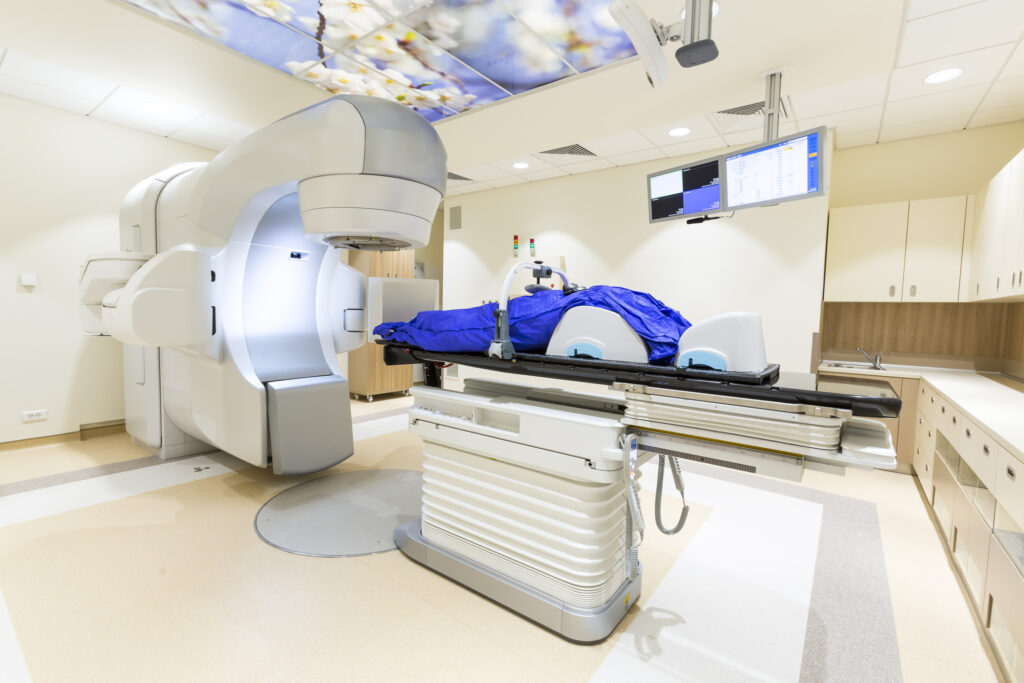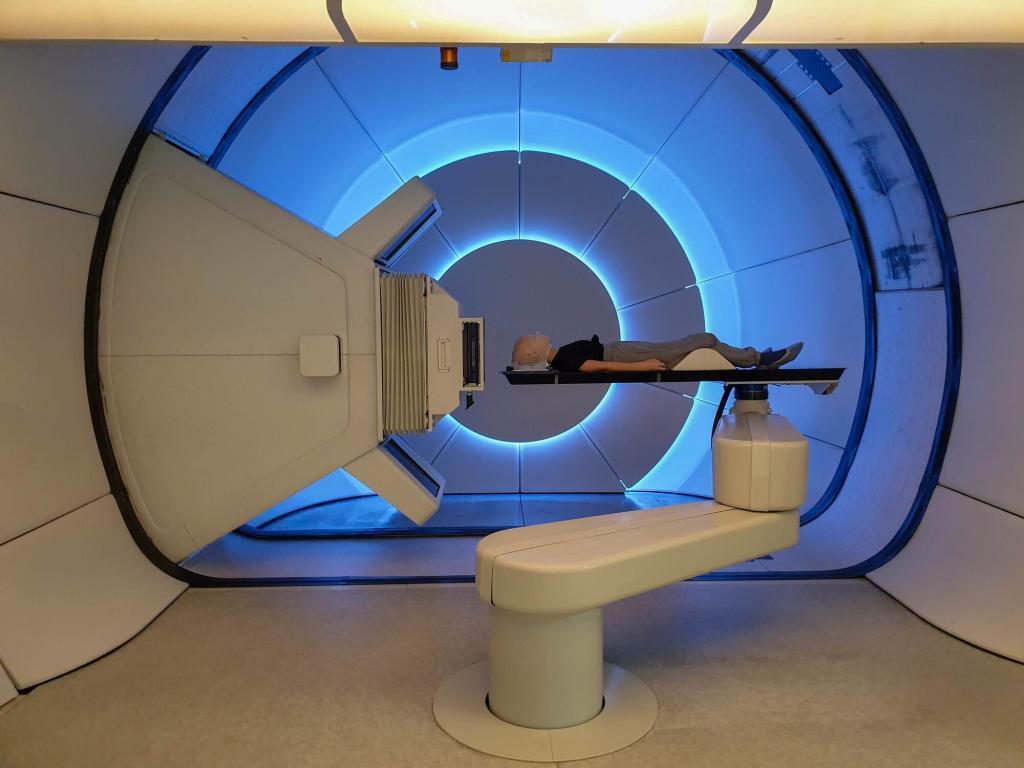Proton therapy is a type of cancer treatment that uses high-energy proton beams to destroy cancer cells. It is a precise and powerful treatment that targets tumours with minimal damage to surrounding healthy tissue.
Accelerating Cancer Treatment: How Cyclotrons and Synchrotrons Power Proton Therapy
Proton therapy uses high-energy proton beams to target and destroy cancer cells. During proton therapy, a cyclotron or synchrotron accelerates protons to high speeds and directs them towards the tumour. As a result, the protons deposit most of their energy at the tumour site, sparing the surrounding healthy tissue from damage.
Proton therapy is particularly effective for treating cancers resistant to conventional radiation therapy, such as those located in the brain, spine, or prostate gland. Also, proton therapy can be used in conjunction with surgery or chemotherapy.
The availability of proton therapy is limited to certain hospitals and treatment centres, which may make it difficult for some patients to access it. Proton therapy is available in the UK at the Christie NHS Foundation Trust in Manchester and the University College London Hospitals.
Both these centres provide proton therapy for various cancer types, including brain, eye, spinal, and prostate tumours. The treatment is usually recommended for patients with cancer close to vital organs, where conventional radiation therapy may cause significant damage to surrounding healthy tissue.
Before treatment, a team of radiation oncologists and medical physicists will create a detailed treatment plan based on the patient’s needs using various imaging techniques such as computed tomography (CT) and magnetic resonance imaging (MRI). The aim is to determine the precise location and size of the tumour. The treatment plan will also consider the patient’s overall health and the specific characteristics of their cancer.
The patient lies on a table during treatment while the proton beam is geared toward the tumour from different angles. The treatment is painless; the patient can usually go home immediately after each session.
Proton therapy is typically delivered over several weeks, each lasting only a few minutes. The total number of treatments will depend on the size and location of the tumour and the individual characteristics of the patient’s cancer.
Proton Therapy: A Versatile Treatment Option for Different Cancer Types
Proton therapy is being used to treat various cancer types, including brain tumours, eye tumours, head and neck cancers, lung cancer, prostate cancer, and certain types of paediatric cancer. The main advantage of proton therapy is that protons deposit most of their energy at the tumour site, sparing the surrounding healthy tissue from damage.
Brain tumours can be challenging to treat with conventional radiation therapy because the brain is a sensitive organ, and radiation can cause damage to healthy brain tissue, leading to long-term side effects. Proton therapy can help to reduce the risk of damage to healthy brain tissue, which can help to minimise side effects.
In addition, proton therapy can treat tumours in critical areas of the brain, such as the brainstem or optic nerve, where surgery may not be an option.
The cost of proton therapy machines can vary widely depending on the type of machine and the manufacturer. The cost of a single proton therapy machine can range from tens of millions of dollars to over $200 million.
One of the reasons why proton therapy machines are so expensive is that they are highly complex and require advanced technology to produce and maintain high-energy proton beams. In addition, proton therapy machines require specialised facilities, including radiation shielding and high-tech monitoring and control systems, which can add to the overall cost of the treatment.
The cost of proton therapy machines can be a barrier to their widespread adoption, particularly in countries with limited healthcare budgets. However, some healthcare systems and governments have made significant investments in proton therapy technology in recent years, recognising the potential benefits of this advanced cancer treatment.
It is worth noting that the cost of proton therapy is not only related to the cost of the machine but also to the cost of the entire treatment, which includes the personnel, facility, and other related expenses. In some cases, insurance companies or national healthcare systems may cover the cost of proton therapy for eligible patients. However, this can vary depending on the country and the specific circumstances of the patient’s case.
Types of Brain Cancer that Respond to Proton Therapy
- Gliomas are tumours that develop from the glial cells in the brain, which provide support and nourishment to the neurons. Gliomas can be either low-grade or high-grade, and proton therapy can treat both types.
- Meningiomas are tumours that develop from the meninges, the membranes covering the brain and spinal cord. Meningiomas are usually benign but can still cause significant symptoms and may require treatment with proton therapy.
- Proton therapy can treat these tumours, which can cause hormonal imbalances and other symptoms.
- Medulloblastomas are more common in children, and proton therapy can be an effective treatment option for these tumours.
- Metastatic brain tumours spread to the brain from other parts of the body. Proton therapy can be used to treat these tumours, which can be challenging to treat with traditional radiation therapy due to their location in the brain.
Proton Therapy and Beyond: The Future of Radiation Oncology
The future of proton therapy looks promising as this treatment option continues to gain popularity and acceptance among patients and healthcare providers. Proton therapy technology is evolving rapidly, with new proton therapy machines and techniques being developed to make the treatment more precise and effective. One of the key advancements is the development of pencil beam scanning, which enables the proton beam to be delivered in a highly precise manner, allowing for better targeting of tumours while minimizing damage to healthy tissue.
As more proton therapy centres are being established worldwide, proton therapy is becoming more accessible to patients. This is due to the decreasing cost of proton therapy machines and the increasing number of healthcare providers offering this treatment option. In addition, the development of proton therapy is being driven by collaboration and research between healthcare providers and researchers worldwide. This has led to the sharing of best practices, the development of new treatment protocols, and the creation of international standards for proton therapy.
Proton therapy is well-suited to personalised medicine, which tailors cancer treatments to individual patients based on their genetic makeup and other factors. As a result, healthcare providers can deliver more effective treatments while minimizing side effects by using proton therapy to target tumours highly precisely. In addition, proton therapy is used with other cancer treatments, such as chemotherapy and immunotherapy, to enhance their effectiveness. This is called combination therapy and has shown promising results in clinical trials.
Disclaimer
The content provided in this article is intended for informational and educational purposes only and should not be construed as medical advice or a substitute for professional healthcare consultation. While every effort has been made to ensure the accuracy and currency of the information at the time of publication, Open Medscience does not guarantee the completeness or reliability of any information presented.
Proton therapy, like all medical treatments, may not be appropriate for all patients or cancer types. Decisions regarding diagnosis, treatment, and care should always be made in consultation with qualified medical professionals, based on the specific needs and medical history of the individual patient.
Open Medscience does not endorse or recommend any particular healthcare provider, treatment centre, or technology. The mention of specific institutions or technologies is for illustrative purposes only and does not imply any affiliation or endorsement.
Readers are encouraged to consult their GP, oncologist, or another licensed healthcare provider with any questions or concerns regarding cancer treatment options.
You are here: home » diagnostic medical imaging blog »



